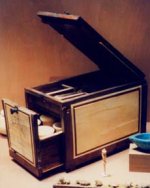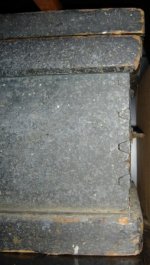On a different thread Fran asked" When did cabinet makers stop using nails and glue for drawer construction and start dovetailing? I have heard a lot of conflicting information on this."
Fran
I replied, "dovetails have been in use for over 4000 years, I saw someone nail a drawer together yesterday."
Mike
Fran followed up with, "So, Mike, when did dovetails become the standard for drawer and carcasse construction in America. In my ignorance I have been assuming that dovetailing came on the scene sometime during the early 19th century and wasn't really common until the latter half of the century. While I am a fairly serious student of period furniture, I openly admit that my eyes rather glaze over when discussions of these particulars manifest themselves."
Fran
I thought this would be better as a separate thread so I moved it here.
Mike
Fran
I replied, "dovetails have been in use for over 4000 years, I saw someone nail a drawer together yesterday."
Mike
Fran followed up with, "So, Mike, when did dovetails become the standard for drawer and carcasse construction in America. In my ignorance I have been assuming that dovetailing came on the scene sometime during the early 19th century and wasn't really common until the latter half of the century. While I am a fairly serious student of period furniture, I openly admit that my eyes rather glaze over when discussions of these particulars manifest themselves."
Fran
I thought this would be better as a separate thread so I moved it here.
Mike


